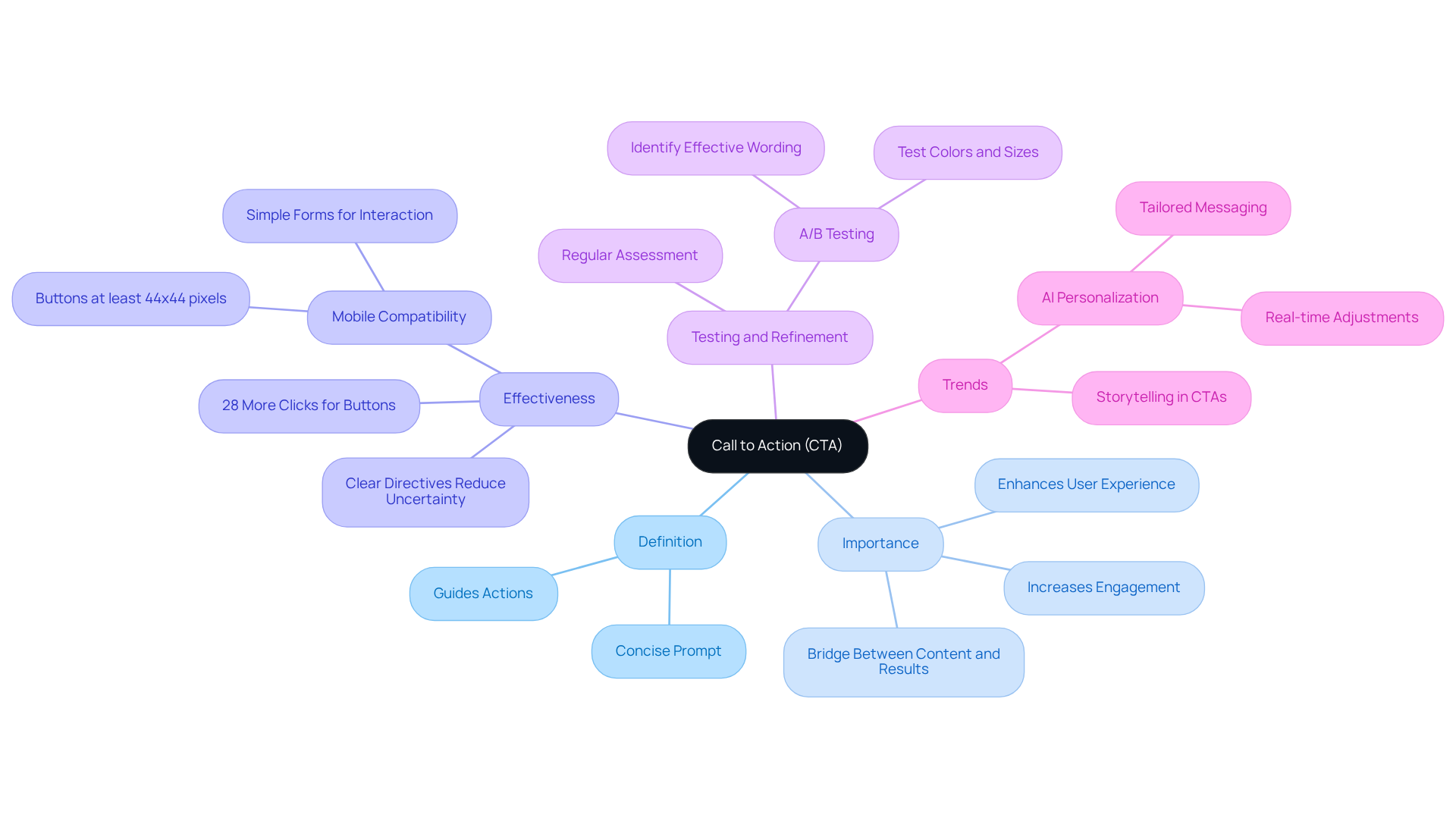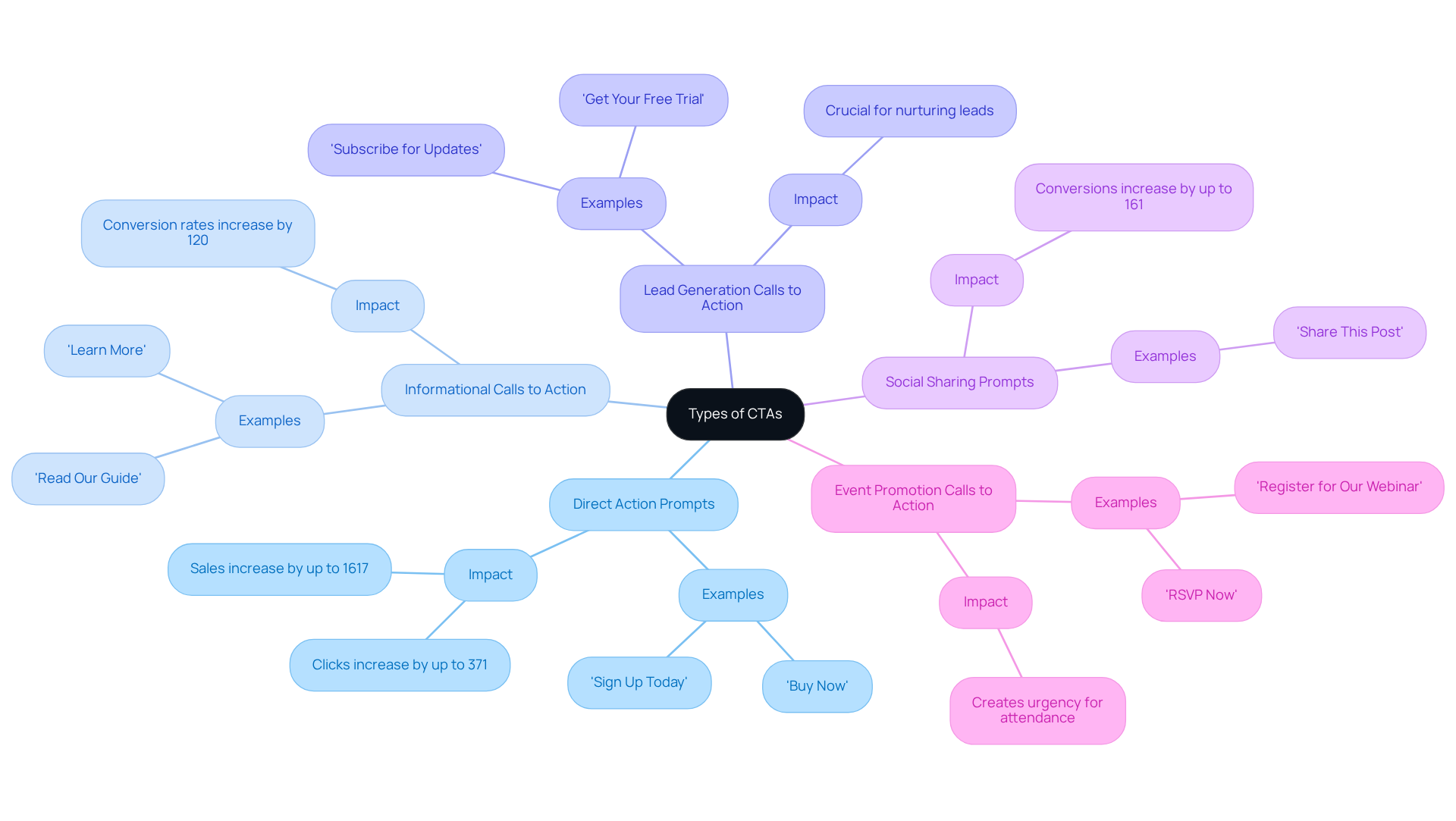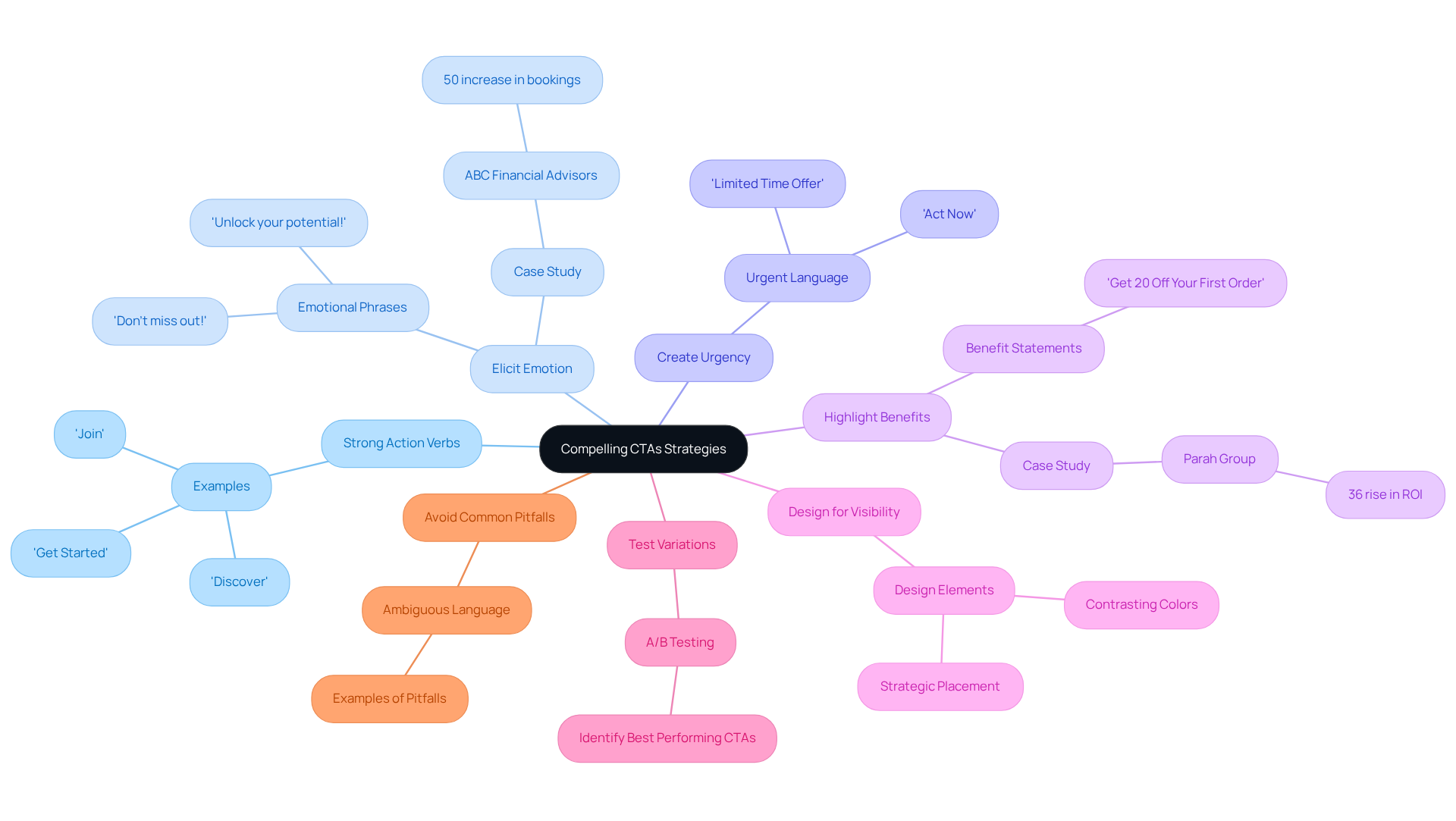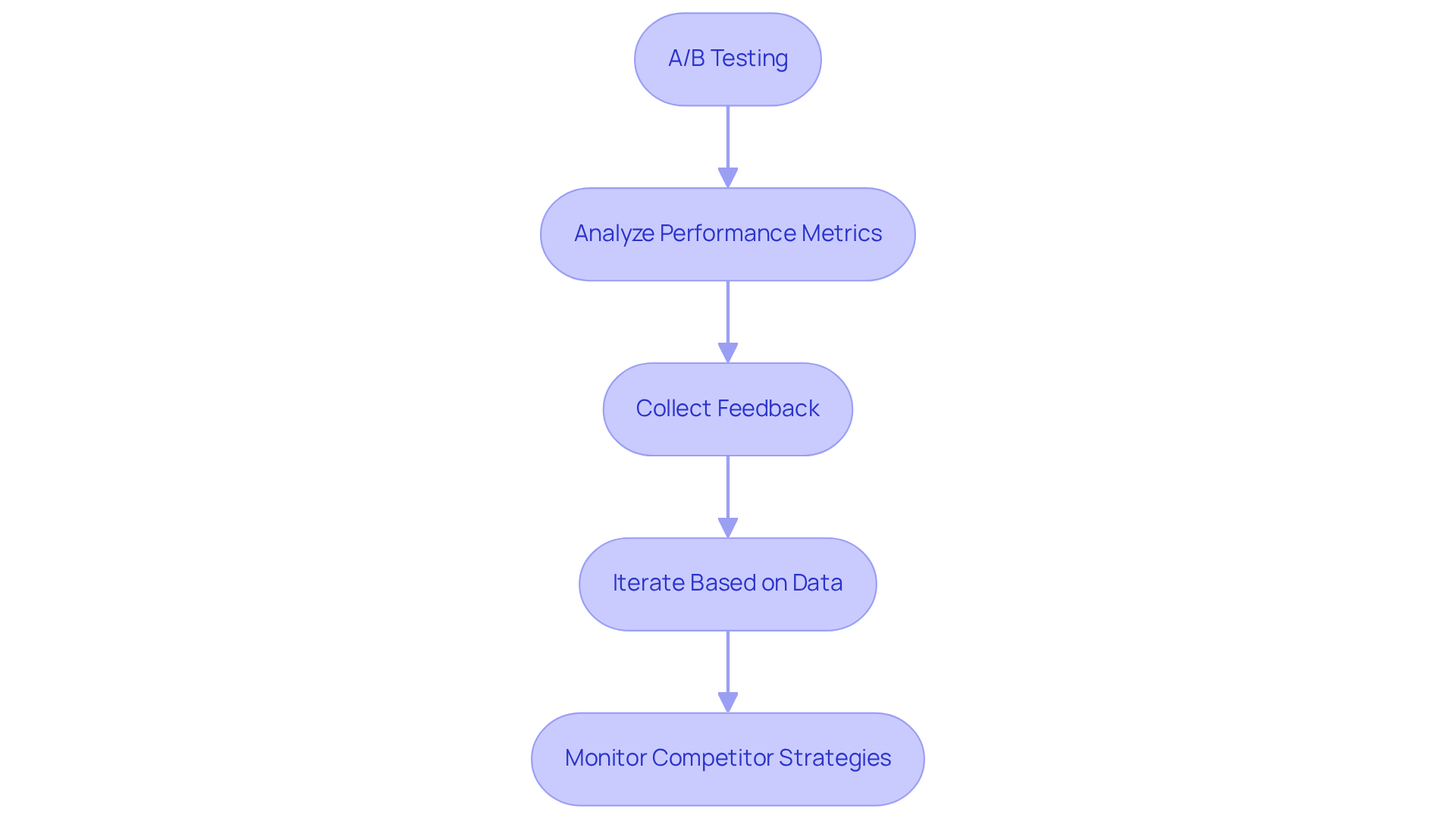
Overview
The article centers on mastering call to action (CTA) techniques to achieve higher conversion rates in marketing. It underscores the critical role of clear, compelling CTAs that direct users toward desired actions. Evidence demonstrates that well-crafted CTAs can significantly enhance engagement and conversion rates. This enhancement is achieved through strategic design, emotional resonance, and continuous optimization practices, such as A/B testing. By implementing these techniques, marketers can effectively guide users and drive desired outcomes.
Introduction
In the fiercely competitive realm of digital marketing, the success of a campaign often hinges on one pivotal element: the call to action (CTA). These succinct prompts transcend mere suggestions; they function as essential navigational tools capable of significantly influencing user behavior and conversion rates. By mastering a variety of CTA techniques, marketers can unlock the potential for enhanced engagement and increased sales. However, with a plethora of strategies at their disposal, how can one discern the most effective method to captivate an audience and drive tangible results?
Define Call to Action CTA and Its Importance in Marketing
A call to action (CTA) is a concise prompt designed to inspire individuals to take specific actions, such as signing up for a newsletter, making a purchase, or downloading a resource. Call to action (CTA) elements are crucial in marketing as they serve as the bridge between content and results, guiding potential customers through the marketing funnel and clarifying the next steps.
Effective call to action (CTA) can lead to significant increases in engagement and success rates by providing clear directives that reduce uncertainty and enhance user experience. For instance, a strategically positioned 'Buy Now' button can drive immediate sales, while a 'Learn More' link can further nurture leads down the funnel.
Notably, call to action (CTA) buttons attract more conversions, garnering 28% more clicks than those embedded in text due to their visibility and design, which highlights their critical role in any marketing strategy focused on optimizing performance and delivering results.
Regularly assessing and refining the call to action (CTA), while to identify the most effective wording, colors, sizes, and placements, can yield insights into what resonates best with the audience, ensuring that the call to action (CTA) remain effective and aligned with customer needs.
Additionally, CTAs must be mobile-compatible by incorporating large buttons and straightforward forms for seamless interaction. As the digital marketing landscape evolves, integrating AI tools to personalize call to action (CTA) based on customer behavior and preferences is becoming increasingly essential, enabling businesses to enhance engagement and conversion rates effectively.

Explore Different Types of CTAs and Their Applications
CTAs can be categorized into several types, each serving distinct purposes that enhance marketing effectiveness.
- Direct Action Prompts: These encourage swift action, such as 'Buy Now' or 'Sign Up Today.' They are particularly effective in boosting results directly, with targeted phrases leading to considerable increases in sales. In fact, focusing on a single call-to-action can elevate clicks by up to 371% and sales by as much as 1617%.
- Informational Calls to Action: Phrases like 'Learn More' or 'Read Our Guide' motivate users to engage with content without the immediate pressure to convert. This approach fosters trust and familiarity, creating opportunities for future conversions. Notably, text-based calls to action can enhance conversion rates by 120%, underscoring the significance of wording.
- Lead Generation Calls to Action: Designed to gather information from individuals, these prompts include phrases such as 'Get Your Free Trial' or 'Subscribe for Updates.' They are crucial for nurturing potential leads and expanding email lists, ultimately driving sales.
- Social Sharing Prompts: Encouraging individuals to share content on social media, such as 'Share This Post,' can significantly boost brand visibility and engagement. This type of CTA leverages social proof, potentially increasing conversions by as much as 161% when individuals observe others benefiting from a product or service.
- Event Promotion Calls to Action: Phrases like 'Register for Our Webinar' or 'RSVP Now' effectively drive attendance to events. Creating urgency with limited-time offers can further motivate users to act promptly.
Understanding these categories enables marketers to cta to align with specific goals and audience behaviors, thereby enhancing overall effectiveness. Furthermore, the strategic positioning of call to action cta is critical; for instance, call to action cta positioned above the fold boast a 73% visibility rate, significantly improving engagement. Additionally, avoiding generic call to action cta in favor of targeted ones that highlight specific solutions or benefits can lead to superior performance. Incorporating visual design elements, such as contrasting colors and shapes, further enhances the effectiveness of call to action cta. Finally, A/B testing is essential for optimizing the call to action CTA performance, ensuring that marketers can refine their strategies based on actual interactions.

Implement Proven Strategies for Crafting Compelling CTAs
To create compelling calls to action (CTAs), consider the following strategies:
- Use Strong Action Verbs: Begin with dynamic verbs that inspire action, such as 'Discover,' 'Join,' or 'Get Started.' These words create a sense of urgency and motivation, encouraging individuals to engage. As noted by Grant A. Johnson, an effective call to action CTA is clear, direct, and uses action-oriented language.
- Elicit Emotion: Incorporate emotionally resonant language. Phrases like 'Don’t miss out!' or 'Unlock your potential!' can significantly enhance engagement by connecting on a personal level. This emotional resonance can lead to higher conversion rates, as evidenced by the 50% increase in bookings for ABC Financial Advisors after implementing a new call to action CTA.
- Create Urgency: Employ time-sensitive language, such as 'Limited Time Offer' or 'Act Now,' to compel immediate action and reduce hesitation. Fostering a sense of urgency encourages individuals to act swiftly, which is essential in today’s fast-paced digital landscape.
- Highlight Benefits: Clearly articulate the advantages users will gain by taking action. For instance, 'Get 20% Off Your First Order' not only emphasizes value but also incentivizes engagement. Parah Group has attained a 36% rise in ROI on advertisements for their clients by employing effective call to action cta that emphasize advantages.
- Design for Visibility: Ensure CTAs stand out visually through contrasting colors, appropriate sizing, and strategic placement. A well-designed button can dramatically increase click-through rates. The design should be intuitive, making it easy for users to identify the next step.
- Test Variations: Implement A/B testing for different CTA versions to identify what resonates best with your audience, allowing for ongoing optimization and improved performance. This practice is essential for refining your approach and .
- Avoid Common Pitfalls: Be cautious of using ambiguous language in your calls to action, as this can result in lost clicks and outcomes. Ensure that your calls to action are clear and direct, guiding individuals effectively towards the desired action.
By implementing these approaches, you can create a call to action (CTA) that successfully boosts results and improves user involvement.

Test and Optimize CTAs for Maximum Impact
To ensure that call to action (CTA) performs at its best, marketers must engage in a rigorous cycle of testing and optimization.
- A/B Testing: Begin by experimenting with various CTA designs, phrasing, and placements to identify which versions yield the highest success rates. For instance, testing a red button against a green one can reveal which color attracts more clicks.
- Analyze Performance Metrics: It is essential to monitor key metrics such as click-through rates (CTR), conversion rates, and engagement levels to evaluate the effectiveness of your CTAs. Tools like offer valuable insights that can guide your strategy.
- Collect Feedback: Conducting surveys or usability tests is crucial for understanding how users perceive your CTAs and what factors might encourage greater engagement.
- Iterate Based on Data: Utilize the insights gained from testing and analysis to continually refine your calls to action. This iterative process is vital for adapting to evolving user preferences and market trends.
- Monitor Competitor Strategies: Keeping a close watch on how competitors utilize calls to action can provide important lessons. Learning from their successes and failures can significantly inform and enhance your own strategies.
By committing to this cycle of testing and optimization, marketers can ensure their call to action (CTA) remains effective and aligned with audience expectations, ultimately driving higher conversion rates.

Conclusion
Mastering the art of crafting effective calls to action (CTAs) is essential for any marketing strategy aimed at boosting conversions. CTAs serve as crucial prompts guiding potential customers toward desired actions, enabling marketers to create clear pathways that enhance user experience and drive engagement. The right CTAs not only clarify next steps but also act as pivotal elements in converting interest into action.
Throughout this article, various types of CTAs have been explored, each designed to fulfill specific marketing objectives. From direct action prompts that encourage immediate purchases to informational calls that build trust, the strategic use of CTAs can significantly impact engagement rates. Proven techniques, such as employing strong action verbs, eliciting emotions, and creating urgency, have been highlighted as effective ways to enhance the appeal and effectiveness of CTAs. Furthermore, the importance of continuous testing and optimization has been emphasized, ensuring that CTAs remain relevant and impactful in a dynamic digital landscape.
Ultimately, the ability to craft compelling CTAs can transform marketing efforts, leading to higher conversion rates and increased customer engagement. By embracing these strategies and committing to ongoing refinement, marketers can create powerful calls to action that resonate with their audience, fostering a deeper connection and driving meaningful results. Now is the time to implement these insights and elevate your marketing campaigns through the strategic use of CTAs.
Frequently Asked Questions
What is a call to action (CTA)?
A call to action (CTA) is a concise prompt designed to inspire individuals to take specific actions, such as signing up for a newsletter, making a purchase, or downloading a resource.
Why are CTAs important in marketing?
CTAs are crucial in marketing as they serve as the bridge between content and results, guiding potential customers through the marketing funnel and clarifying the next steps.
How can effective CTAs impact engagement and success rates?
Effective CTAs can lead to significant increases in engagement and success rates by providing clear directives that reduce uncertainty and enhance user experience.
What is an example of a CTA that can drive immediate sales?
A strategically positioned 'Buy Now' button can drive immediate sales.
How do CTA buttons compare to text-based CTAs in terms of conversions?
CTA buttons attract more conversions, garnering 28% more clicks than those embedded in text due to their visibility and design.
What strategies can be used to refine CTAs?
Regularly assessing and refining CTAs, along with utilizing A/B testing to identify the most effective wording, colors, sizes, and placements, can yield insights into what resonates best with the audience.
How should CTAs be designed for mobile users?
CTAs must be mobile-compatible by incorporating large buttons and straightforward forms for seamless interaction.
How is AI being integrated into CTAs in digital marketing?
Integrating AI tools to personalize CTAs based on customer behavior and preferences is becoming increasingly essential, enabling businesses to enhance engagement and conversion rates effectively.
FAQs











